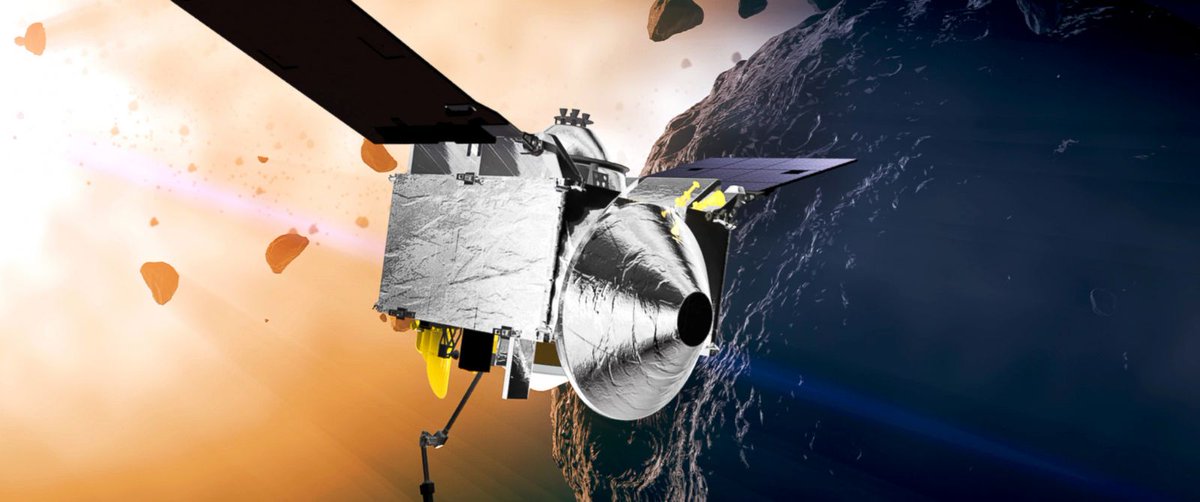In Today’s Deep Space Extra… The challenge of exploring Mars with humans could offer nations a reason to work together and opportunities to build their economies.
Human Deep Space Exploration
The Space Review (9/6): A difficult international journey to reach Mars with humans led by the U.S. could do much to inspire, perhaps soothe tensions that seem to be mounting globally, writes Eric Hedman, chief technology officer at Logic Design Corporation, in an essay. “If we embark on a global project to send humans to Mars, it is a way to get nations to work together in a constructive way,” he predicts. “In doing so, we will create new technologies that will build our economies and solve some of our worst problems.”
Report: Orion’s aggressive launch plan hurt by ‘funding instability’
Orlando Sentinel (9/6): Budgeting instability for NASA’s Orion crew capsule development has complicated efforts by the agency and its prime contractor, Lockheed Martin, to prepare the spacecraft for future test flights, according to an audit from NASA Inspector General Paul K. Martin. Orion, along with the Space Launch System and upgraded ground launch facilities, are cornerstones of NASA’s plans to resume human deep space exploration with missions to lunar orbit, then Mars by the mid 2030s. The IG characterized internal plans by NASA as “risky” to launch the first Orion test flight with astronauts aboard as soon as August 2021. That’s much earlier than its externally announced target date of no later than April 2023.
Space Science
OSIRIS-REx cleared for Thursday launch
Space News (9/6): Following a NASA launch readiness review, mission managers cleared plans to launch the Osiris-Rex spacecraft Thursday night on a seven-year round-trip mission to collect soil samples from the near-Earth asteroid Bennu. The liftoff from Cape Canaveral Air Force Station, Fla., is set for 7:05 p.m., EDT.
Mars contamination fear could divert Curiosity rover
Nature (9/7): After four years on Mars, NASA’s Curiosity rover faces a challenge, navigating its way up the mountain Aeolis Mons, also known as Mount Sharp, without contaminating areas marked by dark streaks that could represent seasonal water flows on the red planet. The concern is the possibility of exposing potentially habitable environments on Mars to Earthly contamination, violating international agreements.
Did a planetary smashup deliver the ingredients for life?
Christian Science Monitor (9/6): The element carbon, an essential ingredient in life processes on Earth, may have been forged in an early solar system collision between the Earth and a Mercury sized object, according to researchers from Rice University and the Woods Hole Oceanographic Institutions. Their findings were published in the journal Nature Geosciences.
Asteroid Named for Rock Star Freddie Mercury
Discovery News (9/6): Freddie Mercury, singer for the rock band Queen, is now the namesake of an asteroid. Astrophysicist Brian May, who once played lead guitar for the band, announced the naming earlier this week. The planetary object, once known as Asteroid 17473, is about 2 miles in diameter and orbits in the main asteroid belt between Mars and Jupiter.
Visible Planets, September 2016: When, Where & How to See Them
Space.com (9/6): Star gazers have opportunities to spot Mercury, Venus, Mars, Jupiter and Saturn in the night skies of September — if they know where and when to look.
Low Earth Orbit
Soyuz spaceship lands in Kazakhstan
Spaceflightnow.com and CBS News (9/7): Three U.S. and Russian astronauts descended safely to Earth in remote Kazakhstan late Tuesday after serving for 172 days aboard the International Space Station. They included NASA’s Jeff Williams and Russian cosmonauts Alexey Ovchinin and Oleg Skripochka. As their Soyuz capsule departed the station, command of the orbiting science lab transitioned from Williams to Russia’s Anatoly Ivanishin. He remains aboard the station with NASA’s Kate Rubins and Japan’s Takuya Onishi. U.S. and Russian replacements will be launched from Russia late this month.
NASA’s Jeff Williams sets record as he and space station crewmates return to Earth
Geekwire (9/6): NASA’s Jeff Williams established a new U.S. record for time accumulated in space over a career, 534 days, as Russia’s Soyuz TMA-20M spacecraft departed the International Space Station for a landing in Kazakhstan late Tuesday. The previous U.S. career mark, 520 days, was established by since-retired NASA astronaut Scott Kelly. Kelly returned to Earth from the Space Station last March.
Commercial to Low Earth Orbit
The Space Review (9/6): Editor Jeff Foust counsels patience as experts unravel the Sept. 1, SpaceX Falcon 9 rocket explosion on a Cape Canaveral Air Force Station launch pad in Florida. Too many have jumped to conclusions about the cause, including speculation of alien influence, and the possible impacts, including a failing grade for the future of U.S. commercial space activities, he writes.
Air Force Joins Investigation into SpaceX Rocket Explosion
DOD Buzz (9/6): The U.S. Air Force has joined an FAA supervised investigation into the Sept. 1 explosion of a SpaceX Falcon 9 rocket on a Cape Canaveral Air Force Station, Fla., launch pad. The blast during a propellant fill operation damaged the launch pad as well as destroyed the rocket and its payload, an Israeli communications satellite. “While this was not a National Security Space launch mission, the U.S. Air Force will continue working with SpaceX to ensure confidence in the safe and reliable launch of critical National Security Space satellites,” said USAF Lt. Gen. Samuel Greaves, commander of the Space & Missile Systems Center and Air Force’s program executive officer for space.

